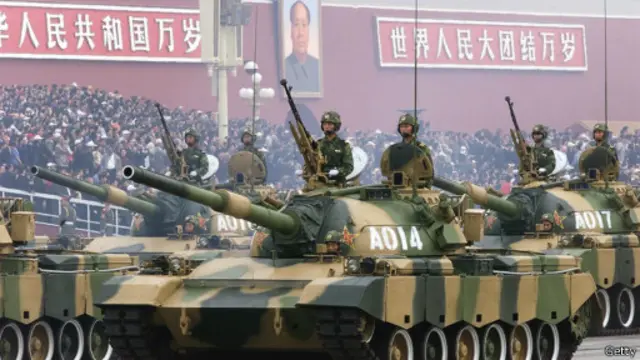
China’s 9/3 Military Parade: Xi Jinping’s Authoritarian Show Meets Trump’s Calm Response
Beijing staged a lavish military parade under the banner of the “80th Anniversary of the Victory in the Chinese People’s War of Resistance Against Japanese Aggression and the World Anti-Fascist War.” With Xi Jinping in a Mao suit, flanked by Russia’s Vladimir Putin and North Korea’s Kim Jong Un, the spectacle was designed to project power and unity. Tanks rolled through Tiananmen Square, fighter jets drew formations in the sky, and 80,000 doves and balloons were released to symbolize “peace.”
At first glance, it looked like a commemoration of history. In reality, it was an authoritarian summit disguised as a military ceremony. The parade presented not just China’s military hardware, but also a symbolic front of three regimes challenging the democratic world.
While Beijing orchestrated a show of might, President Donald Trump’s remarks in Washington offered a striking contrast. Asked by reporters if the parade signaled a challenge to the United States, Trump dismissed the concern. He said plainly, “China needs America more,” stressing that the economic and strategic dependence runs one-sided.
His words underscored a key contradiction: Beijing can flaunt missiles, drones, and battalions in front of cameras, but its economic slowdown, demographic pressures, and dependence on U.S. markets reveal its vulnerability. The parade might impress domestic audiences and a handful of authoritarian allies, yet it cannot mask China’s reliance on American innovation, finance, and trade.
Xi’s speech framed the war against Japan as a Communist Party victory, effectively rewriting history to erase the Republic of China’s central role. This historical revisionism was not accidental—it was part of a calculated strategy to reposition the Communist Party as the rightful heir to global antifascist triumph.
By inviting foreign dignitaries, particularly Putin and Kim, China sought to showcase an “anti-West” coalition. The visual of Xi, Putin, and Kim standing together on Tiananmen’s balcony was no coincidence; it was a staged message that authoritarian powers are aligned against the democratic order. But this tableau also betrays Beijing’s insecurity: only by linking arms with Moscow and Pyongyang can Xi attempt to elevate China’s influence.
The paradox of this spectacle lies in its dual nature. On one hand, China wants to project strength and intimidate the United States and its allies. On the other, Xi’s regime cannot escape the reality that its economic survival and technological advancement are tethered to cooperation with the West. Trump’s reminder—“China needs America more”—cuts through the theatrics and highlights the imbalance at the core of U.S.–China relations.
In practice, the parade exposed Beijing’s dilemma. It must rely on heavy propaganda to shore up legitimacy at home, while relying on Western markets abroad to sustain its fragile economy. Military shows cannot conceal shrinking growth, capital flight, and international distrust.
For the American public, the 9/3 parade is more than a foreign military pageant. It is a direct reminder of how China weaponizes history, propaganda, and alliances to advance its global narrative. By rewriting World War II history, Beijing aims to undermine Taiwan’s legitimacy and weaken Japan’s moral standing. By aligning with Putin and Kim, it signals its readiness to disrupt global stability.
The danger is not in the tanks or jets on display—they are unlikely to intimidate Washington. The real hazard lies in China’s long-term strategy: eroding democratic unity, manipulating historical memory, and pushing authoritarian influence into international institutions.
China’s 9/3 parade may have dazzled television screens, but it did not shake America. On the contrary, it underscored the widening gap between authoritarian showmanship and democratic resilience. Trump’s calm assertion that China needs the United States more than the reverse reframed the event as bluster rather than threat.
For Americans, the lesson is clear: the spectacle in Beijing is not just a domestic performance, but a geopolitical signal. Yet far from weakening the democratic world, such displays only harden the resolve of free nations to push back. The authoritarian trio on Tiananmen Square revealed more about China’s insecurities than its strength.
The United States and its allies should remain vigilant, not fearful—recognizing that beneath the fireworks of military parades, China’s vulnerabilities run deep.